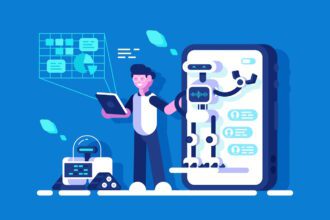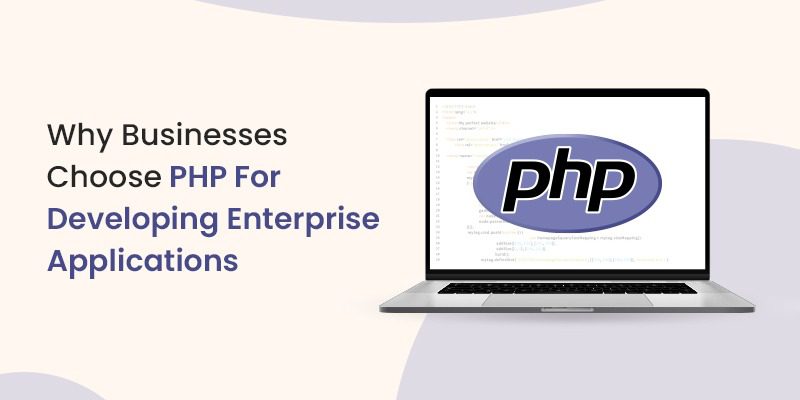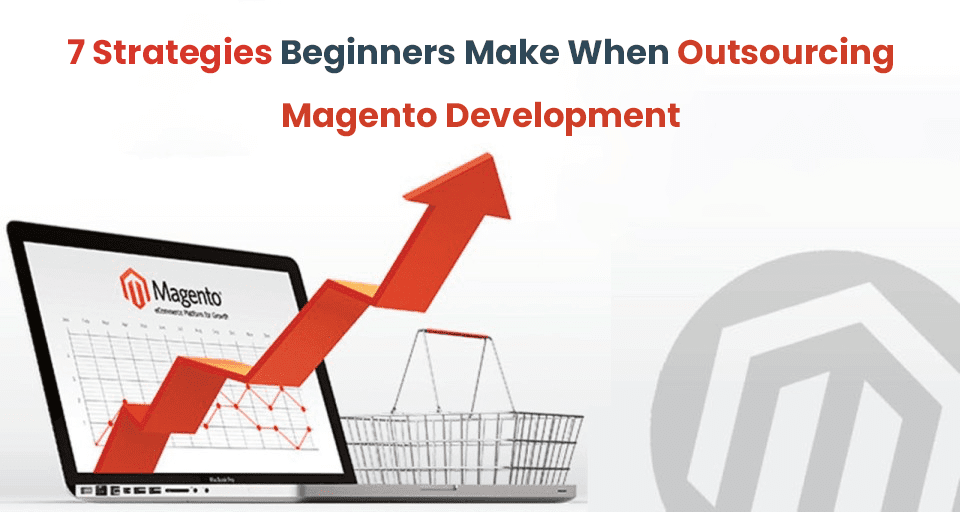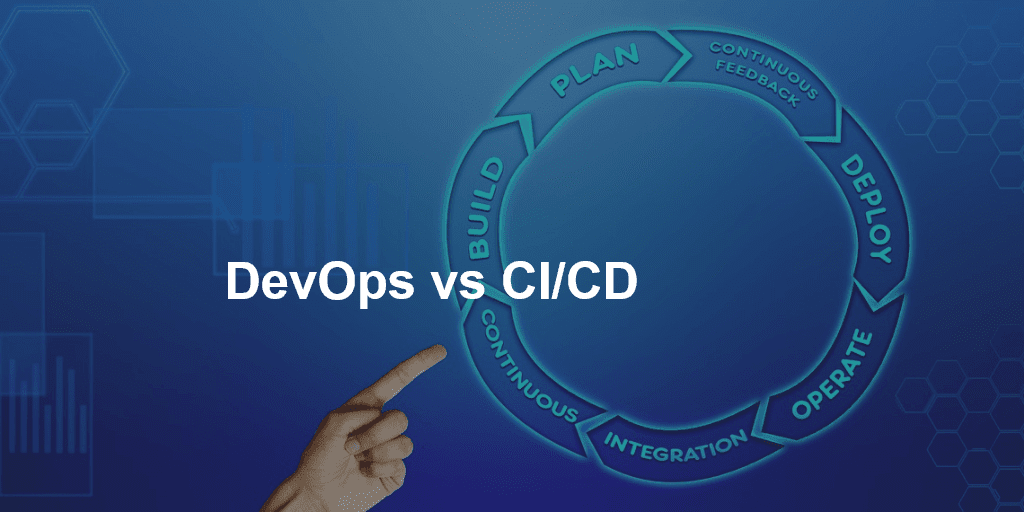
Creating data-intensive applications with full-stack development and data science integration is a modern technological paradigm. This fusion strengthens the power of software engineering, data analysis, and machine learning to create sturdy, data-driven solutions.
Full-stack development includes frontend and backend development. Data science renders the analytical backbone, enabling data-driven decision-making. The integration of these subjects fosters innovation, scalability, and responsiveness to dynamic user needs. It makes a pivotal approach in today’s data-centric world. This article explores how this integration empowers developers to craft sophisticated applications with unparalleled capabilities.
Building Data-Intensive Applications with Full-Stack Development and Data Science Integration
1. Advantages
Building data-intensive applications with full-stack development and data science integration provides numerous benefits as discussed below:
Data-Driven Decision-Making:
It allows organizations to make informed decisions by enabling data analysis and machine learning, resulting in accurate insights and predictions.
Enhanced User Experiences:
Combining frontend and backend development with data science allows for the creation of personalized and dynamic user experiences, improving user engagement.
Scalability:
This approach enables applications to handle large volumes of data and users while maintaining performance, critical for growing businesses.
Competitive Advantage:
Data-driven applications can provide a competitive edge by offering features like recommendation systems, anomaly detection, and predictive analytics.
Efficient Resource Utilization: Integrating data science into the development process helps optimize resource allocation, reducing operational costs.
Real-time Responsiveness: Full-stack development along with data science helps applications to respond in real-time to changing data and user behaviors.
Cross-Disciplinary Collaboration: Bridging the gap between developers and data scientists boosts collaboration and innovation, leading to produce more robust and effective solutions.
2. How is it integrated?
Building data-intensive applications with full-stack development and data science integration involves several steps as discussed below:
Defining Objectives and Requirements:
It involves the initial step of defining the objectives of the application and outlining the specific data-related requirements.
Selecting the Technology Stack:
The next step is selecting appropriate technologies for full-stack development, including front-end and back-end components, along with data science tasks. Choices usually comprise JavaScript frameworks, back-end frameworks, and data science libraries.
Data Collection and Storage:
Data collection and storage play an important role in the acquisition and storage of relevant data from various sources like databases, APIs, or external datasets. Common databases used are PostgreSQL, MySQL, MongoDB, or any cloud-based solutions.
Data Processing and Analysis:
After data acquisition, there’s a need for data preprocessing, cleansing, and transformation, which is accomplished using data science libraries. Additionally, exploratory data analysis (EDA) techniques are applied for insights and pattern identification.
Machine Learning Models:
Machine learning models are developed and trained to handle tasks such as prediction, classification, or recommendation, tailored to the application’s requirements.
Integration with Full-Stack Development:
Integration involves creating APIs or endpoints to facilitate communication between the front-end and the data science back-end. RESTful APIs or GraphQL are commonly used for this purpose.
Front-End Development:
The user interface (UI) is crafted using front-end technologies, ensuring its capability to display data visualizations, reports, or real-time updates.
Real-Time Data Handling:
WebSockets or server-sent events are used to provide real-time functionality in applications needing real-time capabilities.
Testing and Quality Assurance:
Both front-end and back-end components are strictly tested to ensure data accuracy, model performance, and responsiveness of the user interface.
Deployment and Scaling:
The application is deployed to a production environment, often utilizing cloud services for scalability and reliability. Load balancing and autoscaling mechanisms are deployed to handle varying workloads.
Monitoring and Maintenance:
Ongoing monitoring and logging are essential for tracking application performance and promptly detecting issues. Regular updates and maintenance ensure security and efficiency.
User Training and Support:
Users are trained, and ongoing support is provided to address any questions or issues during application usage.
Iterative Improvement:
Continuous feedback gathering and data insights drive iterative improvements, including feature additions, algorithm optimizations, and enhancements to the user experience.
3. Applications
The application of building data-intensive applications with full-stack development and data science integration has a wide range. Here are some examples:
E-commerce and Retail:
l Personalized product recommendations based on user behavior and preferences.
l Inventory management and demand forecasting.
l Fraud detection and prevention in online transactions.
Healthcare:
l Predictive analytics for disease diagnosis and patient outcomes.
l Electronic health record (EHR) management and analysis.
l Drug discovery and clinical trial optimization.
Finance and Fintech:
l Credit scoring and risk assessment for lending.
l Algorithmic trading and financial market analysis.
l Anti-money laundering (AML) and fraud detection.
Marketing and Advertising:
l Targeted advertising campaigns and customer segmentation.
l Social media sentiment analysis and trend prediction.
l Click-through rate (CTR) optimization for online ads.
Manufacturing and Supply Chain:
l Predictive maintenance for machinery and equipment.
l Supply chain optimization and logistics management.
l Quality control and defect detection in manufacturing processes.
Energy and Utilities:
l Energy consumption forecasting and optimization.
l Grid management and smart meter analytics.
l Predictive maintenance for energy infrastructure.
Transportation and Logistics:
l Route optimization for delivery and transportation services.
l Real-time vehicle tracking and maintenance scheduling.
l Demand forecasting for public transportation.
Education:
l Personalized learning platforms with adaptive content.
l Student performance prediction and early intervention.
l Curriculum planning and optimization.
Government and Public Services:
l Crime prediction and law enforcement resource allocation.
l Smart city initiatives for traffic management and infrastructure optimization.
l Public health monitoring and disease outbreak prediction.
Media and Entertainment:
l Content recommendation for streaming platforms.
l Audience engagement analytics and user behavior analysis.
l Content copyright and piracy detection.
Agriculture:
l Crop yield prediction and precision agriculture.
l Pest and disease detection in crops.
l Weather forecasting for farming operations.
Sports and Fitness:
l Performance analysis for athletes and teams.
l Health and fitness tracking with wearable devices.
l Fan engagement and sports event optimization.
4. Limitations
While building data-intensive applications with full-stack development and data science integration offers many advantages, it also comes with several limitations and challenges:
Complexity:
The integration of data science components with full-stack development can be complex and challenging, requiring specialized skills in both areas. Coordinating teams with diverse expertise can be challenging.
Resource Intensity:
Developing and maintaining data-intensive applications can be resource-intensive in terms of time, manpower, and infrastructure. Data storage, processing, and machine learning model training can require significant computational resources.
Data Quality and Preprocessing:
Data used in data-intensive applications often require extensive preprocessing and cleansing to ensure accuracy and reliability. Poor data quality can lead to biased or incorrect results.
Scalability Challenges:
Ensuring that the application scales seamlessly to accommodate growing data volumes and user loads can be a significant challenge. It often requires careful architectural planning and investment in scalable infrastructure.
Model Drift:
Machine learning models used in data-intensive applications may suffer from model drift, where their performance deteriorates over time due to changes in the underlying data distribution. Continuous model monitoring and retraining are necessary to mitigate this.
Privacy and Security:
Managing sensitive data in data-intensive applications requires high-security measures to protect user data and prevent breaches. Data protection regulations such as GDPR or HIPAA are essential.
Interoperability:
Integrating various data sources and technologies can lead to interoperability challenges. Ensuring that different components of the application can communicate effectively is crucial.
Data Bias and Fairness:
Data used for training machine learning models can contain biases that may result in unfair or discriminatory outcomes. Careful consideration and mitigation of bias are necessary to ensure fairness.
Maintenance and Updates:
Data-intensive applications require continuous maintenance and updates to keep up with changing data sources, user needs, and evolving technologies. Neglecting maintenance can lead to performance degradation and security vulnerabilities.
Costs:
The cost of infrastructure, data storage, and data science expertise can be high. Organizations must carefully budget for ongoing expenses related to data-intensive application development and maintenance.
User Adoption and Education:
Users may require training and education to effectively use data-intensive applications, especially if they involve complex data visualizations or analytics features.
Ethical Considerations:
While using the data in applications one must stick to ethical standards, and organizations must consider the ethical implications of data collection, usage, and decision-making.
Despite these problems, the advantages of building data-intensive applications with full-stack development and data science integration often outweigh the challenges. Organizations that successfully address these limitations can gain a competitive edge through data-driven insights and improved user experiences.
Conclusion
Building data-intensive apps with full-stack and data science integration is transformative, uniting development and data prowess. Despite complexities, the synergy offers unprecedented data-driven insights and user experiences.
Challenges like scalability and data privacy require careful consideration and mitigation strategies. Successful implementation empowers organizations to make data-informed decisions, ensuring adaptability and competitiveness.
This fusion is pivotal in modern application development, driving innovation across diverse industries.
Building Data-Intensive Applications with Full-Stack Development and Data Science Integration: FAQs?
1. What do you mean by data-intensive application?
Ans. It is a software application that deals with huge volumes of data, often involving data collection, storage, processing, analysis, and visualization as main components.
2. What is the use of integrating full-stack development and data science?
Ans. Integrating full-stack development and data science enables the creation of applications that are feature-rich and data-driven. This gives us valuable insights and enhanced user experiences.
3. What are the technologies used for full-stack development in data-intensive applications?
Ans. The technologies used for full-stack development in data-intensive applications are:
l JavaScript frameworks (e.g., React, Angular),
l back-end frameworks (e.g., Node.js, Django), and
l database systems (e.g., PostgreSQL, MongoDB).
4. Which programming languages and libraries are essential for data science integration?
Ans. Python is the programming language used for data science integration, along with the following libraries:
l NumPy
l Pandas
l scikit-learn
l TensorFlow, and
l PyTorch
5. How to ensure data privacy and security in data-intensive applications?
Ans. Data privacy and security are ensured by implementing Data encryption, Access control, regular security audits, and compliance with data protection regulations (e.g., GDPR), in data-intensive applications.
6. What are the challenges one faces while maintaining data-intensive applications over time?
Ans. Challenges one faces while maintaining data-intensive applications over time are: changing data sources, evolving user requirements, and the need for continuous monitoring.
7. What is the importance of cloud computing in data-intensive applications?
Ans. Cloud platforms such as AWS, Azure, Google Cloud, etc. are used for data storage, scalable infrastructure, and computing resources, making them appropriate for many data-intensive applications.
8. Name some industries that benefit most from data-intensive applications.
Ans. The industries, like finance, healthcare, e-commerce, manufacturing, and marketing benefit from data-intensive applications








